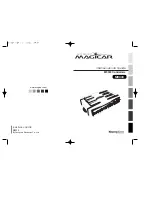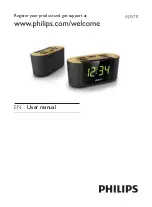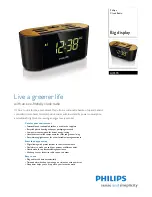
Installation Sheet No. 1337ZE R3.0
Z630-3 Conventional Optical Smoke Detector
Page
2
501-1337ZE-1
www.gesecurity.eu
•
Copyright © 2007 GE Security B.V. All rights reserved
12 November 2007
Figure 1: Mounting the detector
Detector Housing
Component
Cover Plate
Component
Cover Plate
Housing Assy
Screw
Housing Assy
Screw
Housing Assy
Screw
Housing Assy
Screw
2437-01
Top View
Bottom View
Indent -
Zone Labelling
Installation instructions
Note:
No wiring is required during detector installation.
Refer to base datasheet for line wiring installation. All
installation should be in accordance with the
requirements of the authority having jurisdiction.
Refer to Figure 1. The detector attaches to compatible
bases with a plug-and-twist action as follows:
1. Align the detector with the base and turn it slowly
until the location lugs and grooves mate, allowing
the detector to slide completely into the base.
2. Rotate the detector clockwise until it locks. To
remove the unit from the base, perform these steps
in reverse order.
Note:
To prevent unauthorized removal, a plastic breakout
tab is provided in the detector housing. Once the
breakout tab is removed the detector can only be
released by use of a special tool.
Functional test
3. Prior to initial testing remove the yellow plastic dust
cover from the detector and notify the proper
authorities that the fire alarm system is undergoing
maintenance and will be temporarily out of service.
Refer to local codes prior to testing.
Perform a functional test using an aerosol detector
tester.
4. An indent is provided on the detector exterior for
application of Zone number labelling to allow easy
zone identification.
Warnings:
This device detects smoke from slow burning
to smouldering fires, and should only be used
as part of a broad-based life safety system.
For further information consult your local fire
protection specialist.
5. For head out continuity, a diode base must be used
and zone wiring must be terminated with a suitable
end of line (EOL) component. The choice of EOL is
dependant on the control panel used (refer to
Control Panel datasheet). For Control panels
without a head out facility, an active end of line unit
may be used.
Maintenance should be planned in
accordance with the requirements of the
authority having jurisdiction.
Cleaning
Refer to Figure 1.
1. Refer to local codes prior to cleaning.
2. Remove housing screws and the exterior. Remove
the optic chamber by releasing the catch on the
edge of the chamber and twisting the chamber out.
Care should be taken not to damage the insect
mesh window during this operation.
3. Clean the inside of the chamber using compressed
air.
4. Clean the optics and insect mesh windows using
alcohol and cotton buds.
5. Reassemble optic chamber and detector.
6. Check device is functioning correctly.
7. If the device is not functioning correctly, return to
your supplier.




















